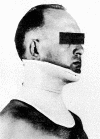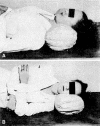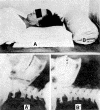The classic: the cervical syndrome. 1949
- PMID: 20177837
- PMCID: PMC2881998
- DOI: 10.1007/s11999-010-1278-8
The classic: the cervical syndrome. 1949
Abstract
This Classic article is a reprint of the original work by Ruth Jackson, MD, FACS, The Cervical Syndrome. An accompanying biographical sketch on Ruth Jackson, MD, FACS, is available at DOI 10.1007/s11999-010-1277-9. The Classic Article is ©1949 by The Dallas County Medical Society and is reprinted with permission from Jackson R. The cervical syndrome. Dallas Med J. 1949;35:139–146.
A second Classic Article, The Cervical Syndrome, is attached to this article as Electronic Supplementary Material (supplemental materials are available with the online version of CORR). This article is ©1955 by Lippincott Williams and Wilkins and is reprinted with permission from Jackson R. The cervical syndrome. Clin Orthop Relat Res. 1955;5:138–148.
Electronic supplementary material: The online version of this article (doi:10.1007/s11999-010-1278-8) contains supplementary material, which is available to authorized users.
Richard A. Brand MD (✉) Clinical Orthopaedics and Related Research, 1600 Spruce Street, Philadelphia, PA 19103, USA e-mail: dick.brand@clinorthop.org
Figures






References
-
- Hanflig SS. Pain in Shoulder-girdle, Arm, and Precordium Due to Foramina! Compression of Nerve Roots. Arch, Surg. 1943;46:652–663.
-
- Michelson, J. J., Mixter, W. J.: Pain and Disability of Shoulder and Arm Due to Herniation of Nucleus Pulposes of Cervical Disc: New England Med. Jr. 231–279–287, Aug. 24, ’44 and 231–490 Oct. 5, ’44.
-
- Bisgard JD. Arthritis of the Cervical Spine, Some Neurological Manifestations. J. A. M. A. 1932;98:1961–1965.
-
- Turner, E. L. & Oppenheimer, A.: A Common Lesion of the Cervical Spine Responsible for Segmental Neuritis: Own. Ind. Med. W; 427–440, 1936.
-
- Spurling, R. G. & Scoville, W. B.: Lateral Rupture of Cervical Intervertebral Disc—Common Cause of Shoulder and Arm Pain, S. G. & O. 78: 350–358, April, ’44.
Publication types
MeSH terms
Personal name as subject
- Actions
LinkOut - more resources
Full Text Sources

